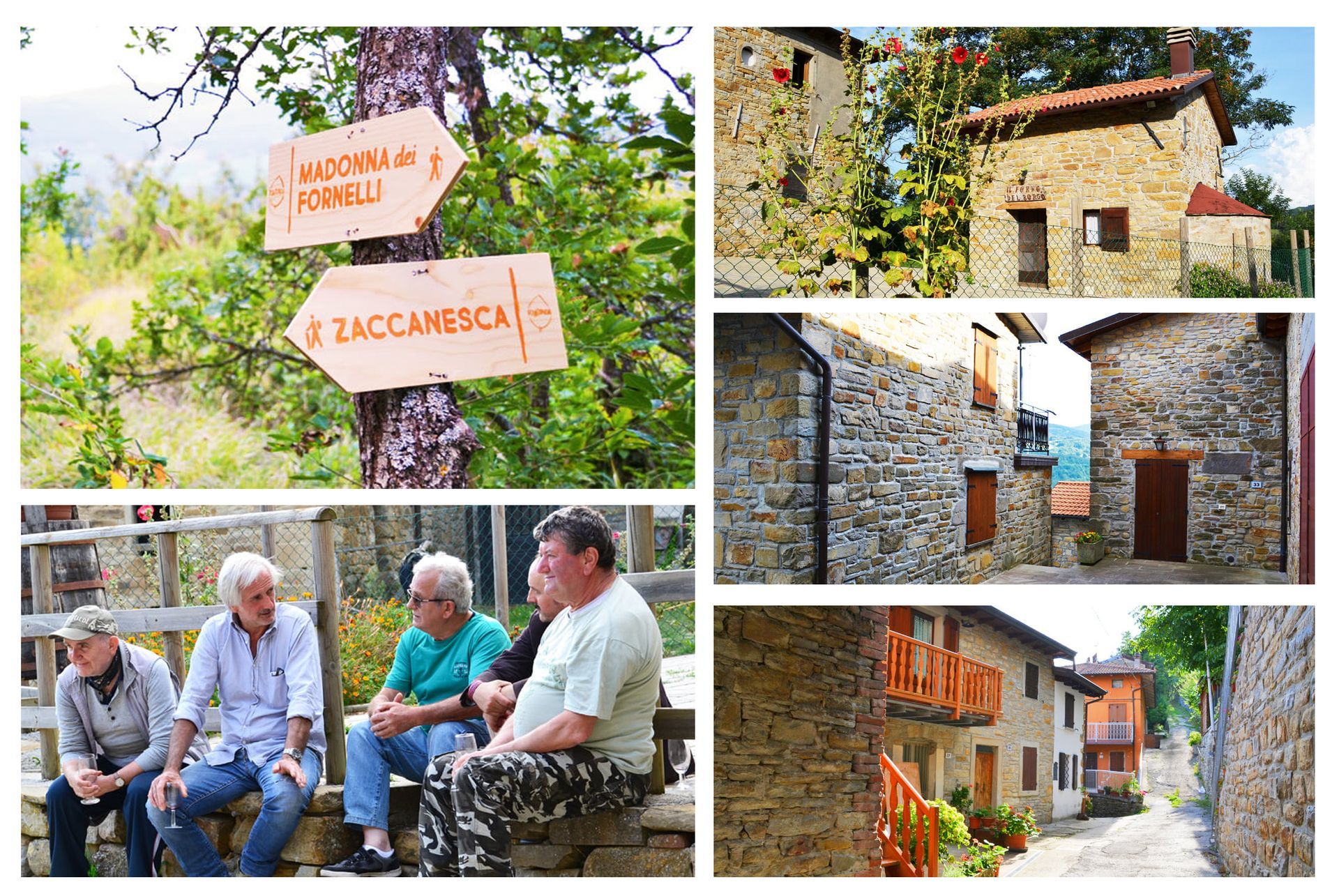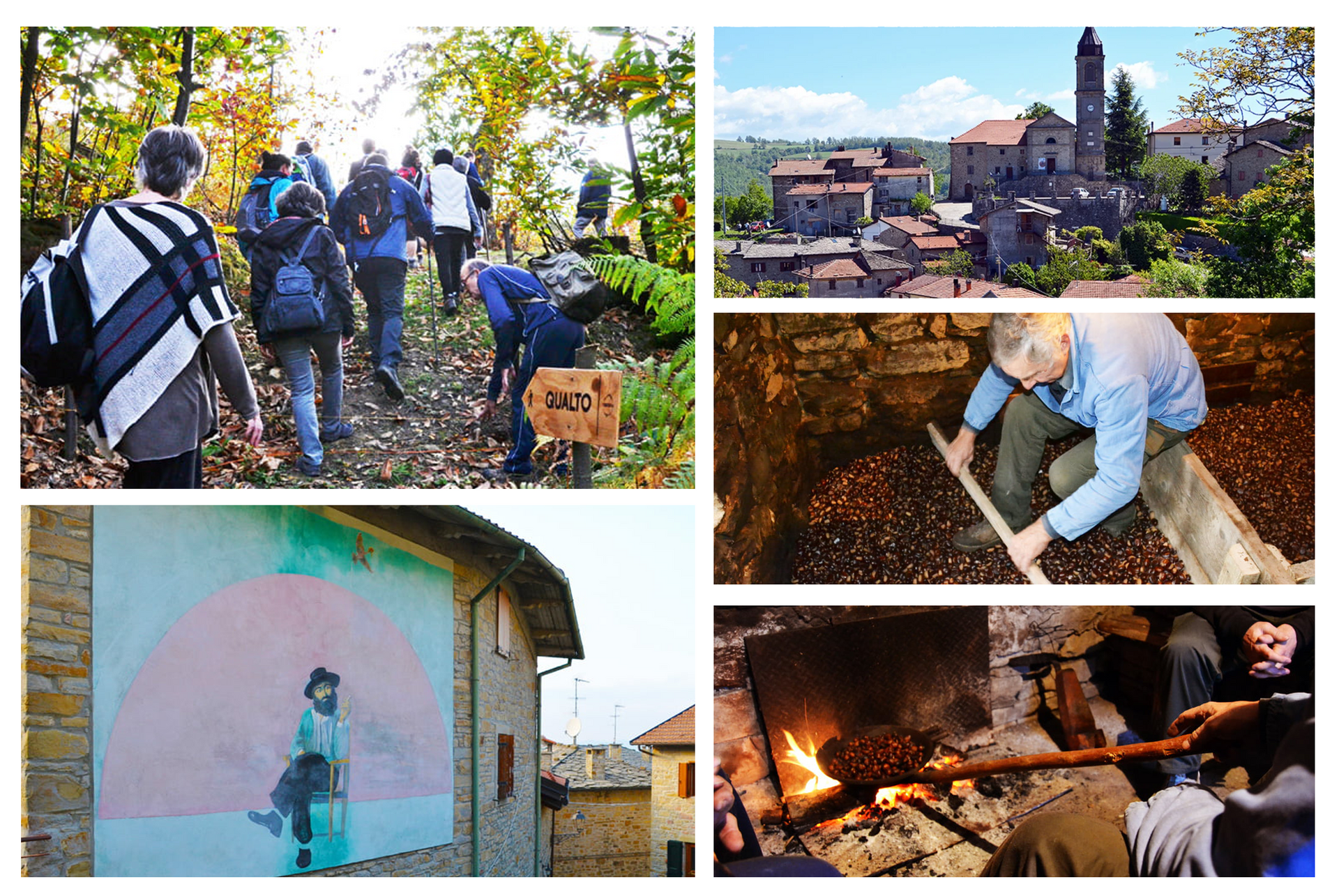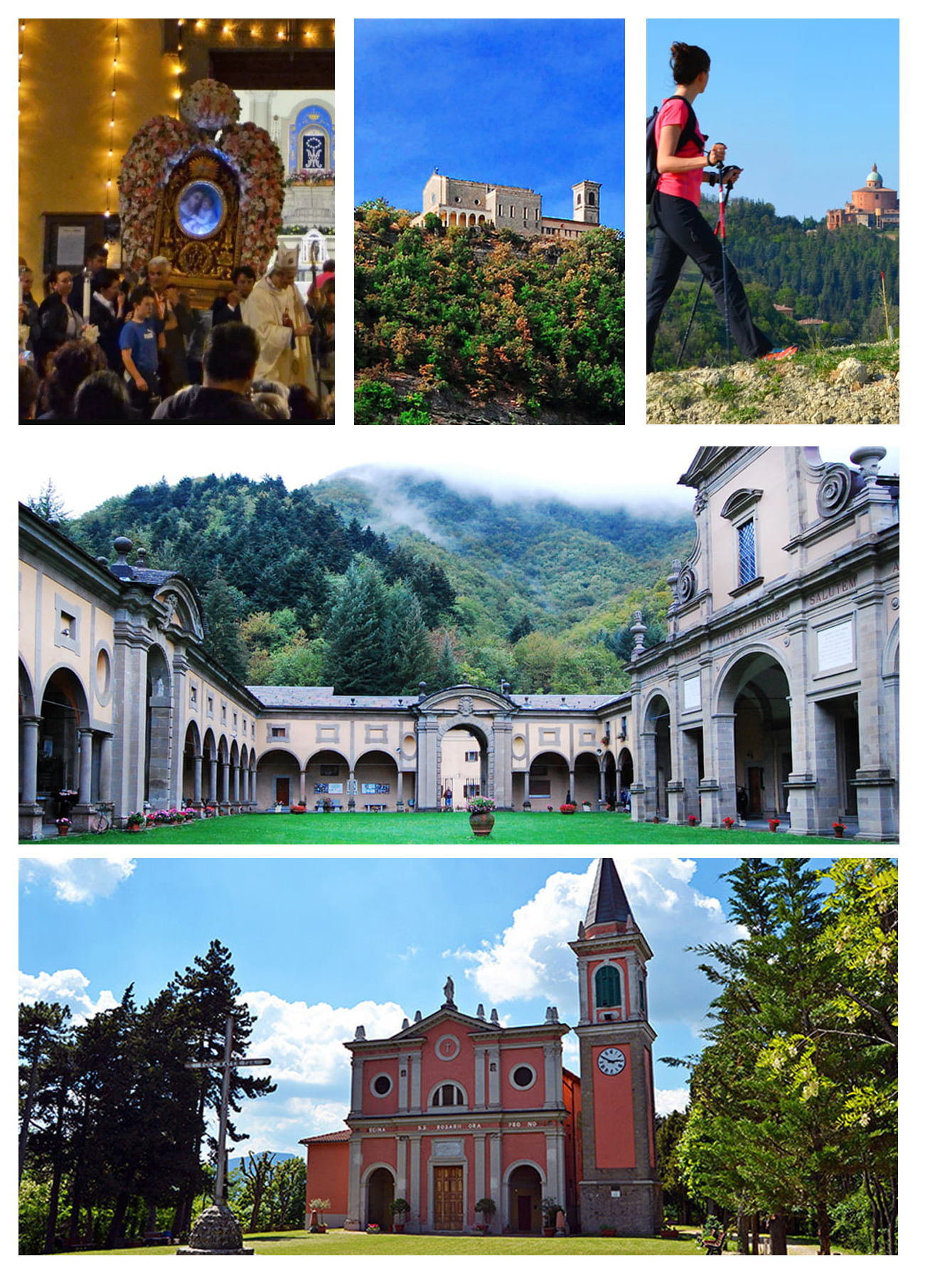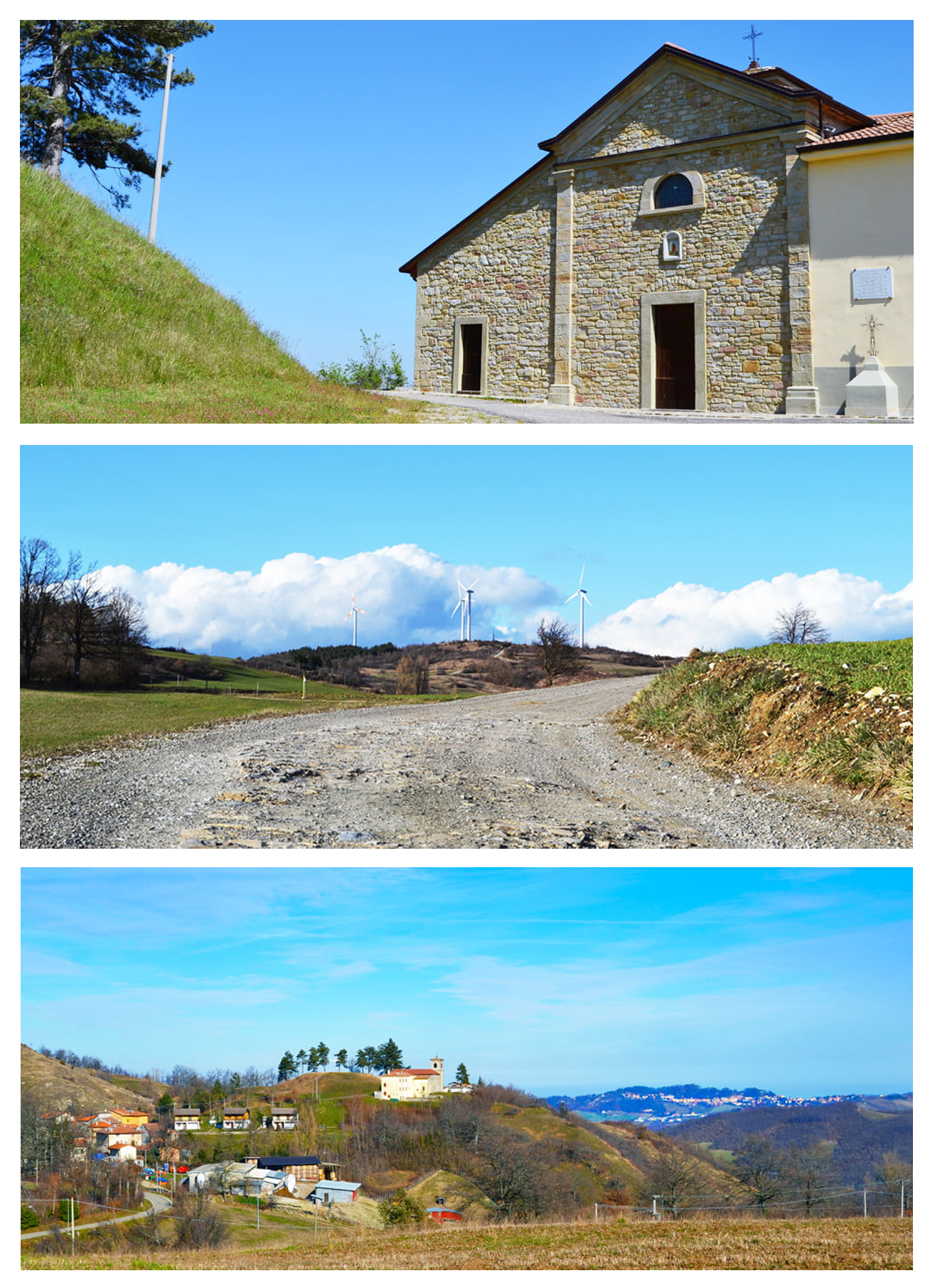FOIATONDA | COMMUNITY COOPERATIVE
THE APENNINES
BETWEEN BOLOGNA AND FLORENCE
A journey through villages, woods, and ridges suspended between history and nature
“Living roots, strong communities, authentic mountain”
The Apennines that inspires, tells stories, and welcomes
DISCOVER THE APPENNINE TERRITORY
Amid green ridges, stone villages, and ancient paths, the Appennine between Bologna and Florence is an invitation to discovery. An authentic territory where historic trails intertwine with breathtaking panoramas, small towns preserve living traditions, and nature offers wonders at every step.
In this section, you will find ideas, routes, and places to explore: from the most charming villages to natural beauties, from ancient roads to lesser-known surroundings, all waiting to be experienced.
Historic Villages
Stories, traditions, and ancient customs intertwine along the streets of the picturesque Appennine villages

Zaccanesca
Almost invisible from the road, among oak and chestnut woods, just a few hundred metres above the course of the Savena stream stands Zaccanesca, one of the oldest villages in the municipality of San Benedetto Val di Sambro. On Provincial Road 79 we are less than 2 km from Madonna dei Fornelli, but Zaccanesca can also be reached via a path that Foiatonda and the community of the small village have restored and marked.
At the centre of the housing complex, known as far back as the 1200s by the name Caccianesca, enclosed within the walls of the houses, stands the Church of Santa Maria, a symbol of the entire history of this beautiful community.
The village is filled with a domestic, archaic atmosphere, and thanks to its few but indomitable inhabitants, it seems to become more beautiful each year. Cesare, Domenico and Renzo, called Favilla, are its custodians and witnesses to a fascinating history. Visiting Zaccanesca is like going to a party, every day. You will always find someone willing to offer you a drink, especially wine, have a chat and listen to the stories of their tradition. And celebrations are still held in Zaccanesca even today! Like Borghi diVini, one of the most important events for the Bolognese Apennines, which finds in this village the ideal location to blend history, food and good wine.
The story of this village never stops. Zaccanesca still lives on today and every gesture, every encounter is a piece of a mosaic in which memory and future, community and affections are the most important glue. Here, after the Great War, there were many families and there was also an elementary school with 25 children running through the alleys of this pearl of the Apennines.
On 15 August, for as many years as no one knows, the traditional Polentata is held in honour of Santa Maria Assunta, and all the little streets of the village centre down to the beautiful courtyard in front of the village oven are filled with long tables to participate in this joyful gathering attended by up to 500 people. On the third Sunday of January, instead, Zaccanesca celebrates Saint Anthony the Abbot. One of the most heartfelt festivals in the entire valley. Since 1863, the year the church was founded, hundreds of inhabitants from neighbouring villages return to collect their loaf of blessed bread.
Zaccanesca is a symbol for Foiatonda and for all the mountain inhabitants. It is also a way of life. A way of facing the challenges of the future. We are brothers of this small community, essential not to lose memory, essential to plan the future of our territory.

Qualto
A jewel of stones set among the branches of its chestnut groves. This is Qualto. The oldest village in the municipality of San Benedetto Val di Sambro. One of the most beautiful in the Bolognese Apennines.
2 km from Madonna dei Fornelli, taking the road to Pian del Voglio, the village appears in all its thrilling splendour and tells us of its origin as a fortified town with its centuries-old stones, the walls, the viewpoint and the doors of the houses that have steadfastly resisted through the centuries.
From Madonna dei Fornelli it is possible to reach the village centre via a path, reopened by Foiatonda with the help of the inhabitants of Qualto, which guides walkers to discover the rich chestnut groves that the community protects as a true treasure and cultivates for the production of the prized flour.
Walking through Qualto is a true discovery. A labyrinth of stone walls, sandstone roofs, lintels, inscriptions, the fountain from which fresh water flows all year round: everything speaks of its history dating back to the early 1200s. A history that still fills the village with an immutable charm. Here and there, “en plein air” artworks painted on the façades of some houses show traces of modernity, giving the village a very particular additional charm.
The Church of San Gregorio Magno dominates the entire village and the square: built around 1300, it is also dedicated to the Blessed Virgin of Mount Carmel who in 1630 protected Qualto from the plague.
Every 2nd Sunday of August the miracle is celebrated by bringing her image in procession and praying to the Patron Saint that everything remains as it is.
Qualto is a piece of the history of this territory. It was an autonomous municipality and was already recognised in the Middle Ages as a great community. A community that has remained original and united through the centuries.
An indescribable spirit lives within every inhabitant, from the youngest to the oldest.
Not far from the church and right by the square stands Cà di Bastiano, an imposing house in an ancient style, incredibly well preserved, surrounded by fig trees and staircases. From the square’s viewpoint, the vital centre of the village offers a breathtaking view up to the ridges of the Corno alle Scale mountains, which glow in the summer sunsets. The trattoria fills the evenings with voices and unmistakable aromas. It’s not just about exceptional foods of Qualto’s tradition. There is always something more. An ancient and mysterious charm that blends with the recipes the tavern prepares for its guests.
A little further down is the old drying house, scadòr in the dialect, where every autumn the chestnuts are laid out to dry for 40 days and 40 nights. During this time, the inhabitants gather to tend the hearth that allows the fruits to warm slowly until they dry. Afterwards, they are cleaned and milled to obtain the flour. The sweet aroma breathed in those days in the village takes us back in time and gives a joy that can only be found in the simplest things in life. A magic that needs no words to be told but must be fully experienced and will make you return here again, where history marries the future of this incredible community to which Foiatonda has dedicated its work. Because only with our villages, with the people who have always protected them, can we imagine the future of our territory.
Paths that once connected great cities are coming back to life thanks to travellers and lovers of outdoor sports.

Via degli Dei
The Via degli Dei is the path that connects Piazza Maggiore (Bologna) to Piazza della Signoria (Florence), crossing the Tuscan-Emilian Apennines.
The route, devised at the end of the 1990s by a group of hikers from Bologna, is about 130 km long and is usually completed in 4 to 5 days.
It owes its name to the peaks of the ridge on the Emilian side whose toponyms recall pagan deities: Monte Adone, Monzuno (from Jupiter: Mons Zeus or Juno: Mons Juno), Monte Venere and Monte Luario, and it is a path difficult to describe in a few lines because it encompasses profoundly different natural habitats. You leave the city walking on the sands exposed between the sandstone towers of the Pliocene Buttress, only to lose yourself amid alternating vast panoramas, dense chestnut woods, wide beech forests and cool fir groves. At the border between the regions, history comes alive by touching the cobbled stones of the ancient Flaminia Militare before reaching the gentle Tuscan hills, among olive trees and cypresses, in a surprising natural variety that allows for great environmental biodiversity.
Throughout the journey, physical activity in wild and uncontaminated nature alternates with pleasant stops to taste typical local specialties, such as tagliatelle, tortellini, tortelloni and crescentine from Bologna, or ribollita and Florentine steaks in Tuscany.
Whether you embark on the journey to find yourself, to answer the call of nature, or to satisfy a sporting passion, the entire trek will be at least as worthwhile as the destination itself. The emotion you will feel when glimpsing Florence from above on the final day of trekking will be indescribable.
Our advice is to take a break from everything, to find a pace that allows you to fully experience the adventure, and to enrich your journey by immersing yourself in the life of the Apennine Communities. This way, you can discover all the charm these places hold and live genuine experiences through stories of history, traditions, and secrets that only the people who live there can reveal to you.

Flaminia Militare
La Flaminia Militare is one of the most important open-air archaeological sites in the entire Bolognese Apennines.
The most evocative stretch where you can discover the original Roman cobblestones is located on Monte Bastione (1190 metres high), about an hour’s walk from the centre of Madonna dei Fornelli following the Cai 019 route towards Monte dei Cucchi–Pian di Balestra, on the border between Emilia Romagna and Tuscany.
Protected by the shadows of beech woods and the branches of the large conifers surrounding the path, shortly after Pian di Balestra you reach the first remains of the Flaminia Militare and, as if by magic, enter history: the Roman road, carved from great millenary stones, tells its story like an ancient embossed book.
Walking on it as the Roman legionaries did two millennia ago is an unrepeatable sensation. Stone by stone, it was built by the Legions to control the territory from above: they cleared everything to lose not a single movement in the valleys below. The road was a stronghold for the safety of their movements along the ridge that connects Bologna and Florence in just a few days.
Today, immersed in a completely natural setting, protected by the great forests that surround it like a treasure chest, you can experience the sensation of time standing still among the grooves of its stones, where, layer upon layer, stories of battles between Romans and Ligurian tribes, pilgrim journeys, and brigands have settled up to the present day.
Our past is here, powerful, stretched out beneath our feet and leading us to Tuscany.
Its construction, dating back to 187 BC, was ordered by the Roman consul Gaius Flaminius to connect Bologna to Arezzo and is contemporary with that of the Via Emilia. There is only one great and substantial difference between the Flaminia and other Roman roads: every stone you encounter on this route is original, carved and laid in that era by the Roman legionaries. No later restorations were carried out because the road fell into disuse a few decades after its construction. The earth has preserved it exactly as it was born up to today.
“The Romans went straight ahead” — so tell the story of this sensational discovery Cesare Agostini and Franco Santi, our fellow countrymen and friends, born in 1936 and 1930 respectively. For two years, from ’77 to ’79, they dug with wild confidence all along the ridge of Monte Bastione until they found the first stretch of Roman cobblestones hidden under 70 cm of earth: it was 25 August ’79.
This discovery, surely the most important of the 20th century, changed the life of all the villages along this ancient route between Bologna and Florence, from which the more modern Via degli Dei was born.
The thousands of walkers who come every year to discover this ancient road are the greatest tribute to Cesare and Franco.
Our Cooperative owes much to them. They have been an example for all of us. We look to them as a model to face the challenges of the future. The preservation and promotion of their discovery is undoubtedly among the most important and urgent tasks.

Via Mater Dei
La Via Mater Dei is the route dedicated to the Marian Sanctuaries of the Bolognese Apennines.
It is a path of about 157 km that unfolds over seven stages along mid-mountain ridges, connecting the city of Bologna to 10 Municipalities of the Bolognese Apennines: Pianoro, Monterenzio, Loiano, Monghidoro, San Benedetto Val di Sambro, Castiglione dei Pepoli, Camugnano, Grizzana Morandi, Vergato and the Municipality of Firenzuola, in Tuscan territory.
Whether your culture is secular or religious, these will be days of great discoveries. It will be a journey of hardships, stumbles, encounters, imperfections, and limits that will, time after time, become springboards to continue with even greater confidence towards the highest aspiration of every human being: to become better.
Between faith and legends, history and popular tales, this journey will reveal the deep bond that links Bologna to its mountains and its communities, characterised by authenticity and a generous, simple hospitality that for centuries have protected and cared for the places of faith in the Apennines. This path will first capture the gaze and then the hearts of the modern pilgrims who wish to undertake this journey.
All information at www.viamaterdei.it
Surroundings to Discover
Small villages, hidden hamlets and wonderful views of significant historical and scenic interest

Cedrecchia
From the centre of Madonna dei Fornelli, the Ancient Roman Road climbs up to reach wide stretches of cultivated fields, ploughed lands and livestock farms immersed in an incredible atmosphere of tranquillity. It is right there, just a stone’s throw from the Monte Galletto wind farm, that Cedrecchia rises.
Escorted by rows of trees that welcome the visitor, the main road winds through the houses of the village and after a short steep climb arrives before the beautiful Church of San Paolo, where a precious 17th-century altarpiece depicting the Madonna with Saints Paul and Peter is kept.
The time of this small and industrious community is marked by the chimes of the bell tower, an echo that spreads along the ridge and down into the valleys of this enchanted landscape: on one side the Sambro Valley with a splendid view of the sunset and on the other the Savena Valley, visible from kilometres away.
Every 2nd Sunday of September in the little square of the locality, already known in the Middle Ages as Cidricula, the Patron Saint, Saint Paul, is celebrated. On this occasion the inhabitants of the neighbouring villages come on foot in a traditional walk that leads them to the festival.
Generation after generation, the evenings in this small village of farmers and breeders are warmed by the fireplace and by stories of the past. Memories that tell of the gestures that still accompany daily life in this community.
Cedrecchia is also connected by a woodland path to Villa di Cedrecchia, the village below, which is also reachable from Provincial Road 79 that links Madonna dei Fornelli to Monzuno.
This small village comes alive especially in summer around the wonderful Church of San Lorenzo.
Every 11th February the feast of Our Lady of Lourdes is celebrated, and on 10th August the Patron Saint, Saint Lorenzo, to whom the night of shooting stars is dedicated. Every spring the holidaymakers return, the shutters of the houses reopen and the village awakens from the torpor of winter, giving breath and peace to the inhabitants of Bologna and Florence who, in just 40 minutes, return to this small oasis of relaxation far from the roar of the city.
Subscribe to the newsletter and follow our activities
SUBSCRIBE
Thank you for contacting us.
We will reply to you as soon as possible.
An error occurred while sending the message.
Please try again later.






